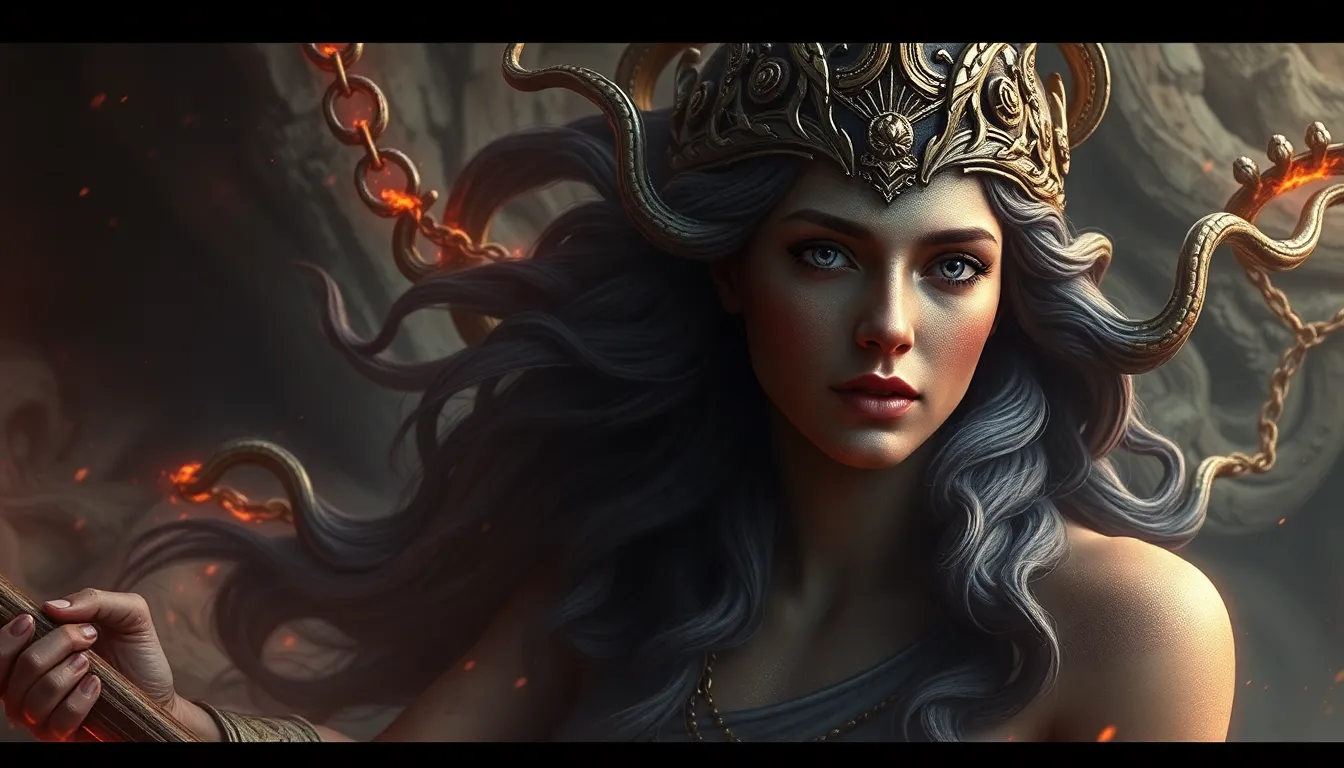Pandora: A Journey Through the Myths That Define Her Legacy
I. Introduction
Pandora is one of the most significant figures in Greek mythology, known for her role in the myth that explains the origins of human suffering and hope. Her story is rich with themes of curiosity, consequence, and the duality of human nature. This article aims to explore the various myths surrounding Pandora, shedding light on her legacy and the diverse interpretations that have emerged throughout history.
II. The Origins of Pandora in Greek Mythology
A. The creation of Pandora by the gods
Pandora was created by the gods as a response to Prometheus’ theft of fire from Olympus. Zeus, angry at Prometheus for his defiance, ordered the creation of Pandora, the first woman, as a gift to humanity—but one that would ultimately bring misfortune. Each god contributed to her creation, bestowing her with unique gifts that made her enchanting yet dangerous.
B. The symbolism of her name and what she represents
The name “Pandora” means “all-gifted” in Greek, symbolizing the various talents and attributes given to her by the gods. However, her beauty and charm mask a deeper meaning; she embodies the complexities of human existence, including temptation and the struggle between curiosity and consequence.
III. The Myth of Pandora’s Box
A. The story of the infamous box (or jar)
The most famous aspect of Pandora’s myth is the story of Pandora’s Box, although it is more accurately described as a jar (the Greek word “pithos” refers to a large storage jar). According to the myth, Pandora was given this jar and instructed not to open it. Driven by curiosity, she eventually succumbed to temptation and opened the jar, releasing all the evils of humanity, such as sickness, turmoil, and despair.
B. Analysis of the contents and their implications for humanity
As Pandora opened the jar, she released countless misfortunes that plagued mankind. However, at the bottom of the jar was Hope, which remained inside. This duality in the myth suggests that while suffering is an inevitable part of human life, hope is also an intrinsic part of the human experience, offering solace amidst adversity.
IV. Themes of Curiosity and Consequences
A. The role of curiosity in Pandora’s story
Pandora’s curiosity is a central theme in her narrative. It serves as a reminder of the human tendency to seek knowledge and understanding, often despite warnings. This insatiable curiosity leads to Pandora’s downfall but also reflects a fundamental aspect of human nature.
B. How her actions reflect broader human experiences
Pandora’s actions can be seen as a metaphor for the human condition. Just as she could not resist the urge to open the jar, individuals often struggle to resist temptation, facing the consequences of their choices. This theme resonates with the idea that curiosity can lead to both enlightenment and destruction.
V. Pandora in Art and Literature
A. Representation of Pandora in ancient and modern artworks
Pandora has been a popular subject in art throughout history. Ancient Greek pottery often depicted her opening the jar, capturing the moment of her fateful decision. In modern art, Pandora is frequently portrayed in various forms, symbolizing the complexities of human emotion and experience.
B. Notable literary references and reinterpretations
- The myth of Pandora has inspired numerous literary works, from Ovid’s “Metamorphoses” to contemporary novels that explore her character in depth.
- Modern reinterpretations often focus on her character as a more sympathetic figure, emphasizing her role as a victim of the gods’ machinations.
VI. The Evolution of Pandora’s Image
A. From a figure of blame to a symbol of hope
Historically, Pandora has often been viewed as a figure of blame for humanity’s suffering. However, over time, her image has evolved. Scholars and artists increasingly interpret her story as one of resilience and hope, highlighting the significance of the hope that remained in the jar.
B. Changes in perception through historical contexts
The interpretation of Pandora has varied across different eras. During the feminist movements, she was reimagined as a symbol of women’s strength and curiosity, challenging the traditional narratives that painted her as merely a source of evil.
VII. Pandora’s Legacy in Contemporary Culture
A. The influence of Pandora on modern storytelling and media
Pandora’s story continues to influence modern storytelling, appearing in films, books, and television shows. Her character often embodies themes of curiosity and the consequences of one’s actions, making her a relatable figure in contemporary narratives.
B. Exploration of Pandora in feminist interpretations
In recent years, feminist interpretations of Pandora have gained prominence. Scholars argue that her story can be seen as a critique of gender roles, showcasing her as a complex character who navigates a world dominated by male gods and patriarchal narratives.
VIII. Conclusion
A. Summary of Pandora’s enduring relevance
Pandora’s legacy remains relevant today as a symbol of human curiosity, the consequences of our choices, and the enduring presence of hope amidst suffering. Her myths offer profound insights into the human condition and the complexities of our emotions.
B. Reflection on how her myths continue to shape our understanding of human nature and curiosity
As we reflect on Pandora’s story, we recognize that her journey is not just about the release of evils but also about the resilience of hope. The myths surrounding her continue to shape our understanding of curiosity, consequence, and the nuanced nature of humanity itself.




